Harnessing Calm: The Role of Mindfulness in Autism Education
Bridging Innovations in Autism Support with Mindfulness Strategies
Integrating mindfulness into autism learning offers a promising approach to enhance emotional regulation, social skills, and overall well-being among individuals with autism spectrum disorder (ASD). This article explores the scientific foundations, practical techniques, benefits, and resources crucial for embedding mindfulness into educational routines and supportive environments for autistic learners and their caregivers.
Overview of Mindfulness Integration in Autism Education
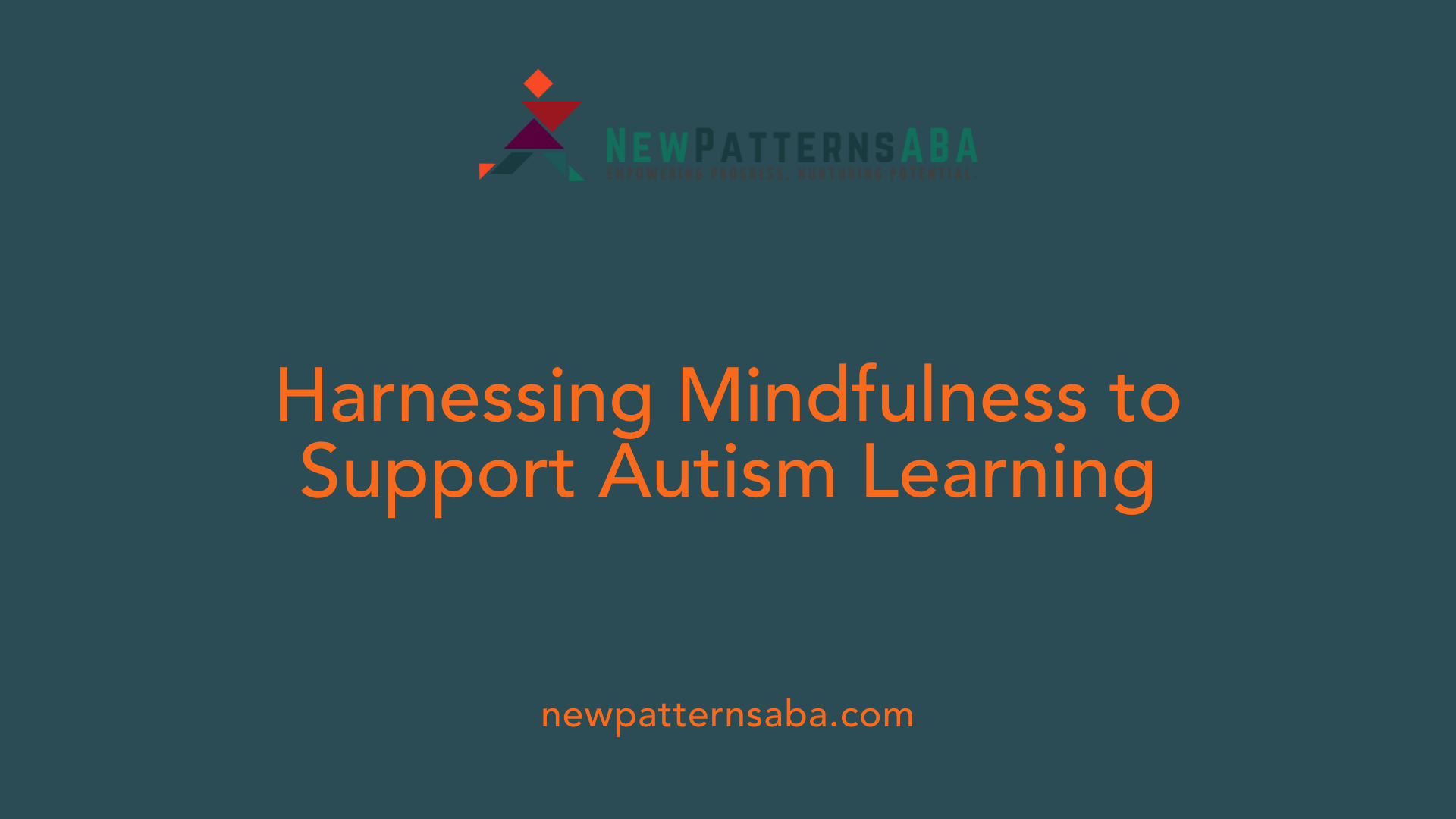
What is the overview of integrating mindfulness into autism education and development?
Integrating mindfulness into autism education involves adopting specific practices known as mindfulness-based interventions (MBIs) that are tailored to meet the unique needs of individuals with autism spectrum disorder (ASD). These interventions are designed to help improve various aspects of functioning, including focus, emotional regulation, and social skills, which are often areas of difficulty for individuals with ASD.
Standard programs such as Mindfulness-Based Stress Reduction (MBSR) and MYmind are widely studied and applied, showing positive effects like reducing stress, anxiety, and behavioral challenges. These approaches have been adapted to be accessible for autistic individuals by emphasizing sensory engagement, structured routines, and movement-based elements. For children and adolescents, mindfulness practices have been linked to improvements in behavior, emotion regulation, and social interactions.
Beyond the individuals with ASD, caregivers also benefit from these practices through reductions in stress and anxiety, and improvements in overall well-being. This dual benefit underscores the importance of integrating mindfulness strategies into broader autism support and educational frameworks.
Emerging tailored interventions—designed specifically for subgroups within the autism spectrum—look promising, offering more personalized support. Nevertheless, the current body of research still faces limitations, such as small sample sizes, reliance on self-report assessments, and a lack of long-term follow-up. Most studies are preliminary, especially in research involving younger children, and more rigorous investigations are necessary.
Overall, evidence suggests that integrating mindfulness into autism education can serve as a valuable complementary tool, fostering not only emotional and sensory regulation but also enhancing social responsiveness and overall quality of life. As research advances, these practices may become more refined and widely applicable, offering meaningful support throughout the developmental stages of individuals with ASD.
Scientific Research Supporting Mindfulness for Autism
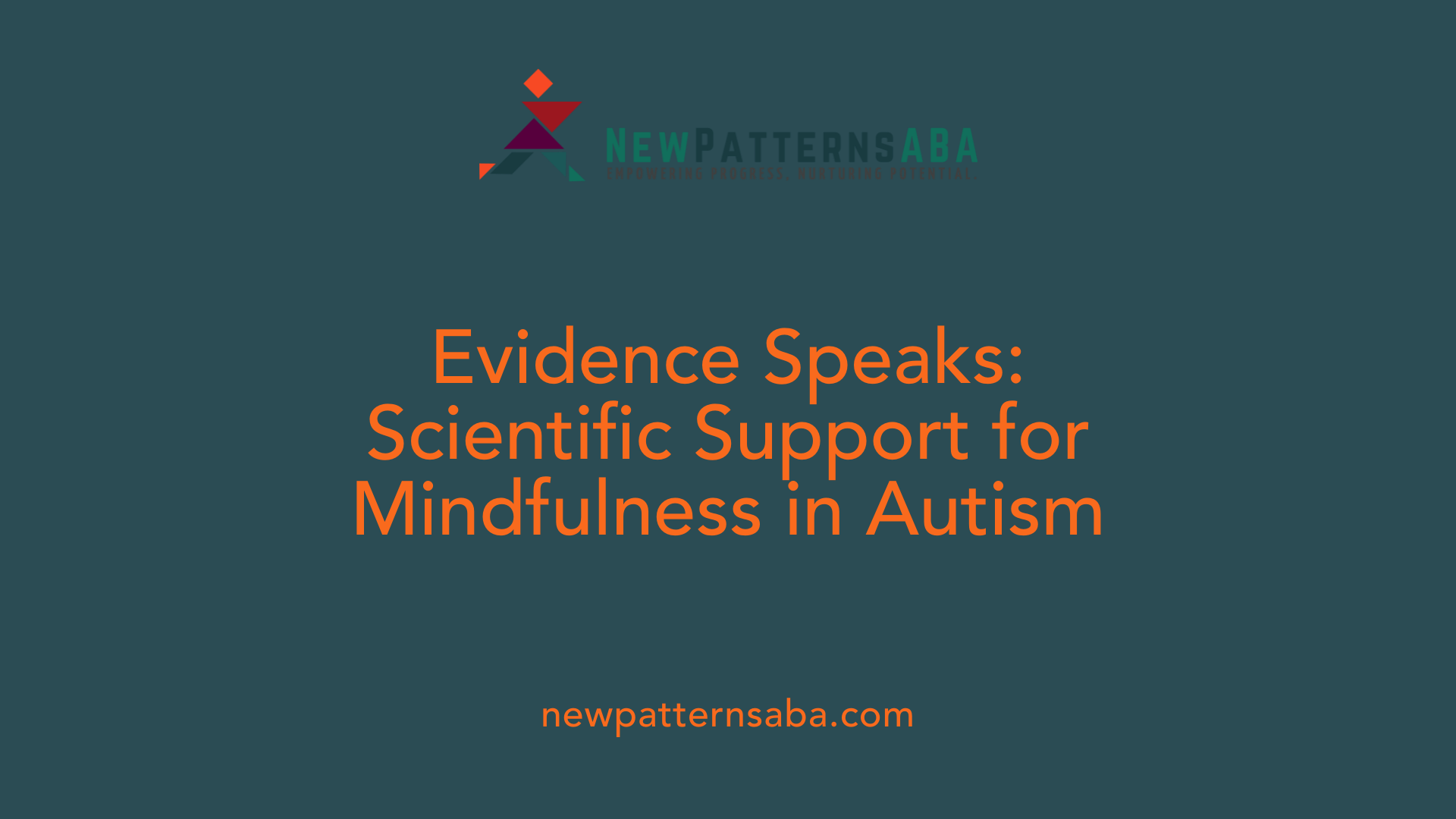
What scientific research supports mindfulness as an intervention for autism?
A growing body of scientific evidence highlights the potential of mindfulness-based interventions (MBIs) to support individuals with autism spectrum disorder (ASD). A recent systematic review examining 37 studies provides strong support for the feasibility and usefulness of these practices.
This review encompasses studies involving individuals with ASD across different age groups, their caregivers, and healthcare providers. The findings suggest that MBIs like Mindfulness-Based Stress Reduction (MBSR), Mindfulness-Based Cognitive Therapy (MBCT), and specialized programs such as MYmind are effective in promoting mental well-being.
Many studies report that MBIs help reduce stress, anxiety, and depression for autistic adults and caregivers. For example, adults practicing mindfulness have shown significant decreases in sensory overload and emotional distress. Specially designed mindfulness programs for children and adolescents showed improvements in behavior, emotion regulation, and social interactions.
The positive effects extend beyond emotional benefits. Caregivers of individuals with ASD experienced reduced psychological distress, which can contribute to better support for their loved ones. This suggests a ripple effect, where improving caregiver well-being benefits the entire support network.
While the evidence overall is promising, it is considered moderate in quality. Common limitations include small sample sizes, reliance on self-report questionnaires, and lack of blinding. These factors highlight the need for further high-quality research to confirm and refine effective approaches.
In addition to traditional methods, recent adaptations of mindfulness practices have been developed specifically for autistic adults. These include sensory-engaging techniques, structured routines, and movement-based activities, which address common sensory sensitivities and cognitive preferences.
Research indicates that tailored mindfulness practices—such as tactile grounding, guided visualizations, and mindful movement—can be integrated into daily routines. These strategies help manage sensory overload, improve emotional regulation, and reduce overall stress.
Overall, the current evidence underscores the potential of mindfulness as a supportive intervention for ASD. Continued research is needed to develop standardized protocols and explore benefits for younger children, ensuring that practices are accessible and effective for diverse populations.
Methods and Techniques for Mindfulness Integration
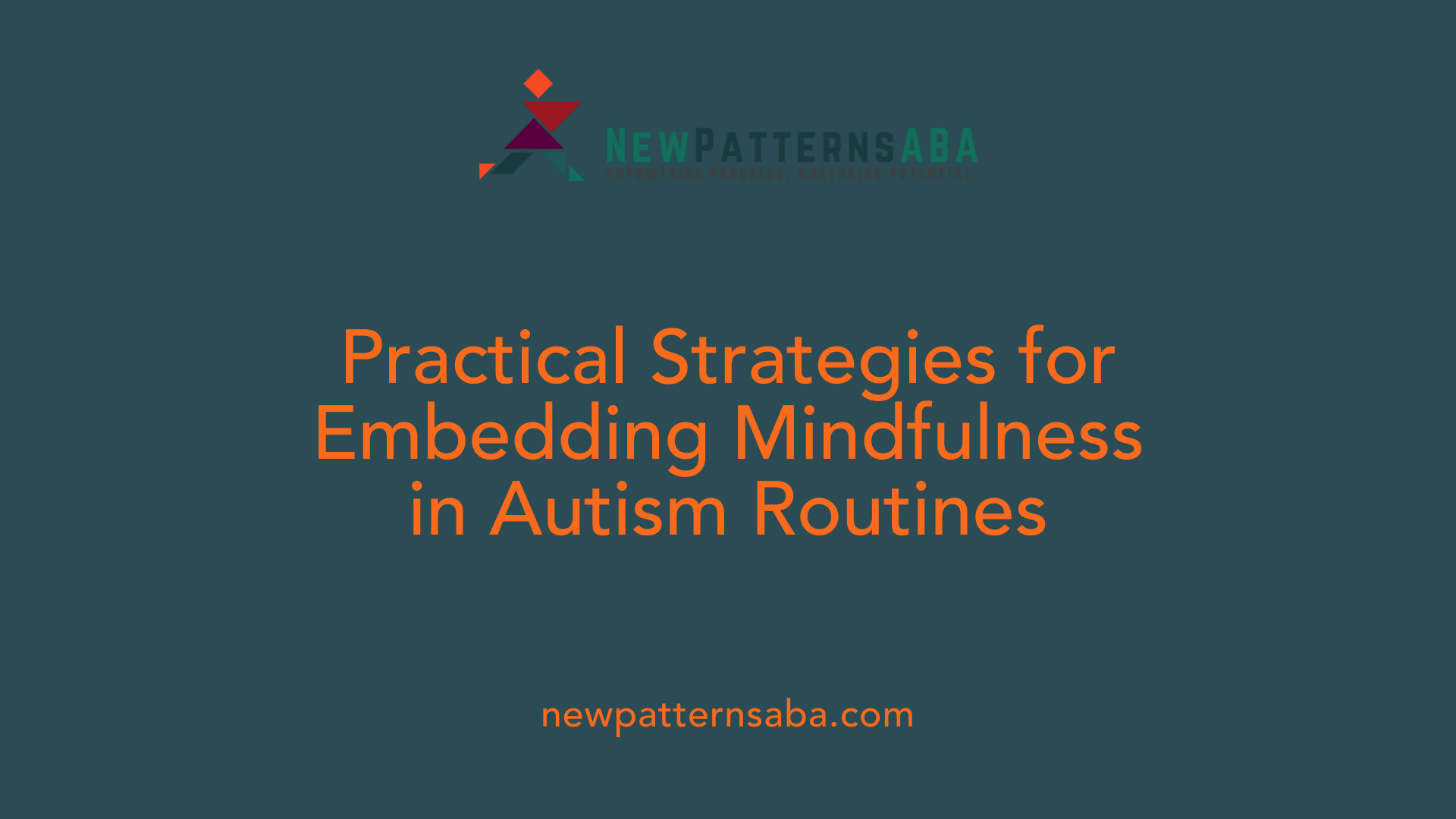
What methods and techniques can be used to incorporate mindfulness into autism learning routines?
Integrating mindfulness into routines for individuals with autism involves the use of specific, adaptable techniques designed to support emotional regulation, sensory processing, and focus. These methods can be seamlessly embedded into daily activities by leveraging visual supports, sensory tools, and structured repetition.
One common approach is guided breathing exercises. These practices help individuals focus on their breath, promoting calmness and reducing anxiety. For example, simple inhalation and exhalation cues can be paired with visual aids like animated bubbles or pictures to guide attention.
Body scans are also effective. These involve systematically guiding individuals to focus on different parts of their body, fostering awareness and relaxation. Body scans can be customized with tactile or visual supports, like textured objects or highlighting images to alert individuals to bodily sensations.
Sensory activities form a core component of mindfulness routines. These include tactile grounding exercises such as holding textured objects, temperature awareness activities like feeling warm or cool sensations, and the use of sensory bins or textures that promote focus. Incorporating sensory stimuli aligned with individual preferences enhances engagement.
Furthermore, mindful movement practices—such as gentle yoga, stretching, or walking—offer movement-based mindfulness that combines physical activity with present-moment awareness. These activities help regulate sensory input and improve body awareness.
To optimize incorporation into daily routines, practitioners often pair mindfulness exercises with existing activities like meal times, transitions, or quiet times. Visual schedules, timers, and reminders support consistent practice. Personalizing these techniques to accommodate each child's sensory sensitivities and interests—such as using favorite textures, sounds, or interests—boosts comfort and participation.
Training educators and caregivers in mindfulness strategies is crucial for creating supportive environments. When developed into routines, mindfulness practices can foster improved emotional and behavioral regulation, social engagement, and overall well-being.
In summary, tailored techniques like guided breathing exercises, body scans, sensory activities, and mindful movement—structured, sensory engaging, and adaptable—are effective tools for integrating mindfulness into autism learning routines, helping individuals manage sensory overload and emotional challenges.
Tailoring Mindfulness Practices for Autistic Adults
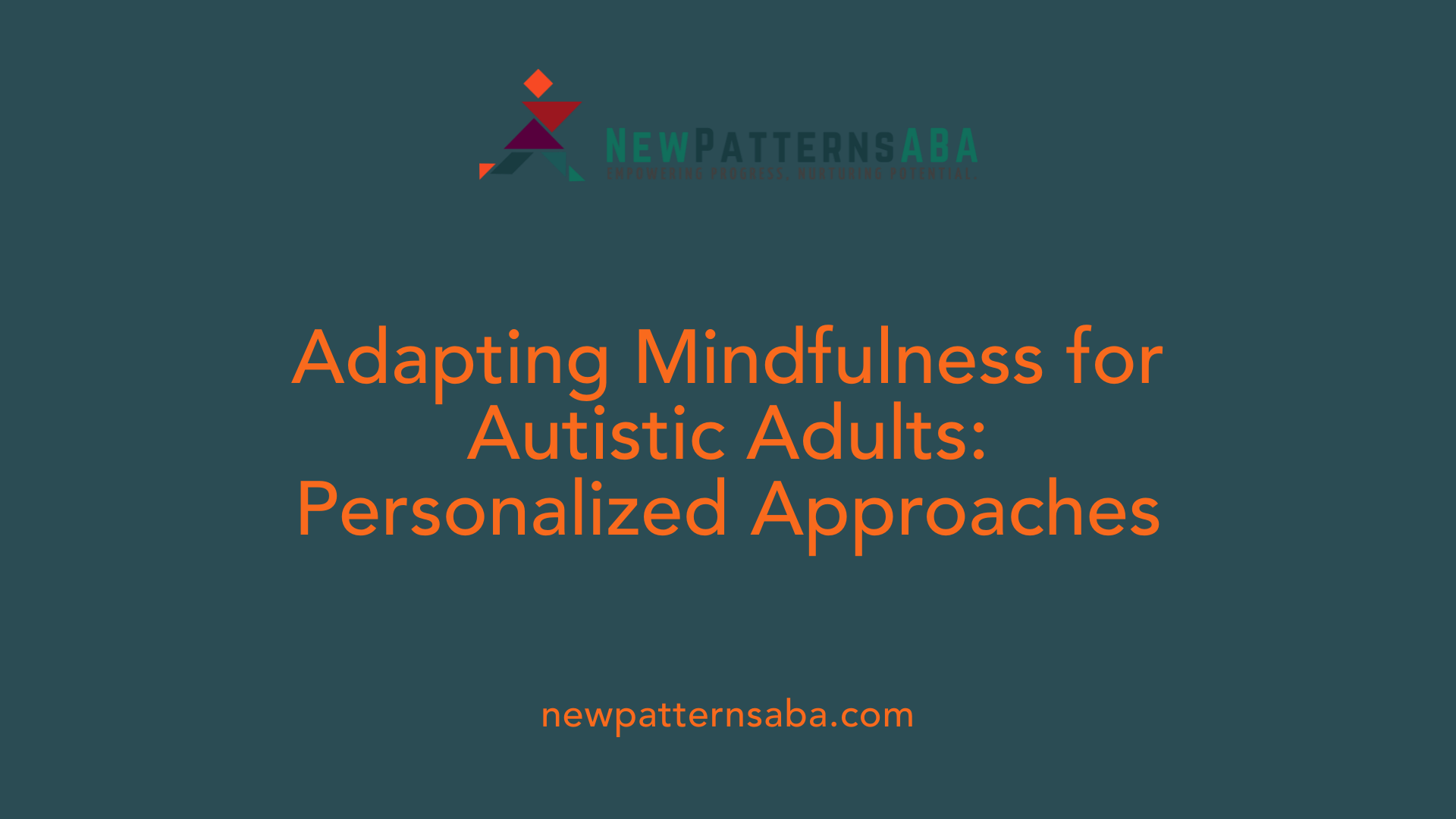
What traditional mindfulness practices need adjustments for autistic adults?
Traditional mindfulness practices often emphasize abstract concepts like non-judgmental awareness and open-ended meditation. For autistic adults, these practices may need tailored modifications to address unique sensory, cognitive, and emotional needs.
One essential adjustment involves incorporating sensory engagement. Sensory sensitivities are common among autistic individuals, making certain stimuli overwhelming or distressing. To accommodate this, mindfulness activities can include tactile grounding exercises, such as holding textured objects, or guided visualizations focusing on sensory experiences like temperature or calming sights.
Structured routines and visual supports also play a vital role in making mindfulness accessible. Consistency helps reduce uncertainty and frustration, which can otherwise hinder participation. Using visual schedules, timers, and step-by-step instructions simplifies the process and provides predictability.
Movement-based techniques offer a flexible alternative to traditional sitting meditation. Activities like mindful walking, stretching, or yoga can be adapted to suit different motor preferences and sensitivities. These practices promote interaction with the environment, which can increase engagement and provide additional sensory input.
Personalization is crucial. By pacing sessions according to individual comfort levels and preferences, practitioners can foster better acceptance and benefits. Incorporating special interests or preferred activities into mindfulness routines encourages participation and enjoyment.
Self-compassion and patience are equally important. Recognizing that some practices may be challenging initially helps prevent frustration and supports ongoing engagement. This compassionate approach reduces self-judgment, fostering a positive emotional connection to mindfulness.
In summary, to effectively adapt mindfulness for autistic adults, practices should include tactile grounding, movement, structured routines, visualization, and personalization. These adjustments make mindfulness more inclusive, accessible, and beneficial for managing sensory overload, emotional regulation, and overall mental health.
Personalization of Mindfulness for Autistic Individuals
How can mindfulness practices be personalized to help manage sensory overload and emotional distress?
Personalizing mindfulness techniques is crucial for effectively supporting autistic individuals. Tailored routines that resonate with their unique sensory preferences and emotional needs can significantly improve outcomes.
One effective approach involves integrating mindfulness activities into daily routines. For example, pairing mindfulness exercises with familiar tasks like brushing teeth or preparing meals helps build consistency and comfort. These routines serve as cues for practicing mindfulness, making it easier to access calming strategies when needed.
Using reminders, such as visual timers or vibration alerts, can support regular practice. For example, a visual cue like a sticker chart or a timer can remind an individual to take mindful breath breaks during the day.
Incorporating sensory tools—such as tactile objects or engaging interests—can enhance the relevance and engagement of mindfulness activities. For instance, squeezing a textured object during grounding exercises or focusing on a favorite scent can help anchor attention and reduce distress.
Creating routines that incorporate movement-based or sensory engagement activities, like guided visualizations paired with rocking or stretching, can aid emotional regulation and sensory processing. These customized practices help individuals manage overloads more independently.
Overall, personalizing mindfulness for autistic adults involves understanding their specific sensory sensitivities and emotional states. Practices should be adaptable, with options to modify activities based on immediate needs.
This approach promotes a sense of mastery and control, reducing feelings of frustration and fostering well-being. Regularly reviewing and adjusting routines ensures mindfulness remains relevant and effective for each individual’s evolving needs.
Challenges and Solutions in Mindfulness Practice for Autistic Adults
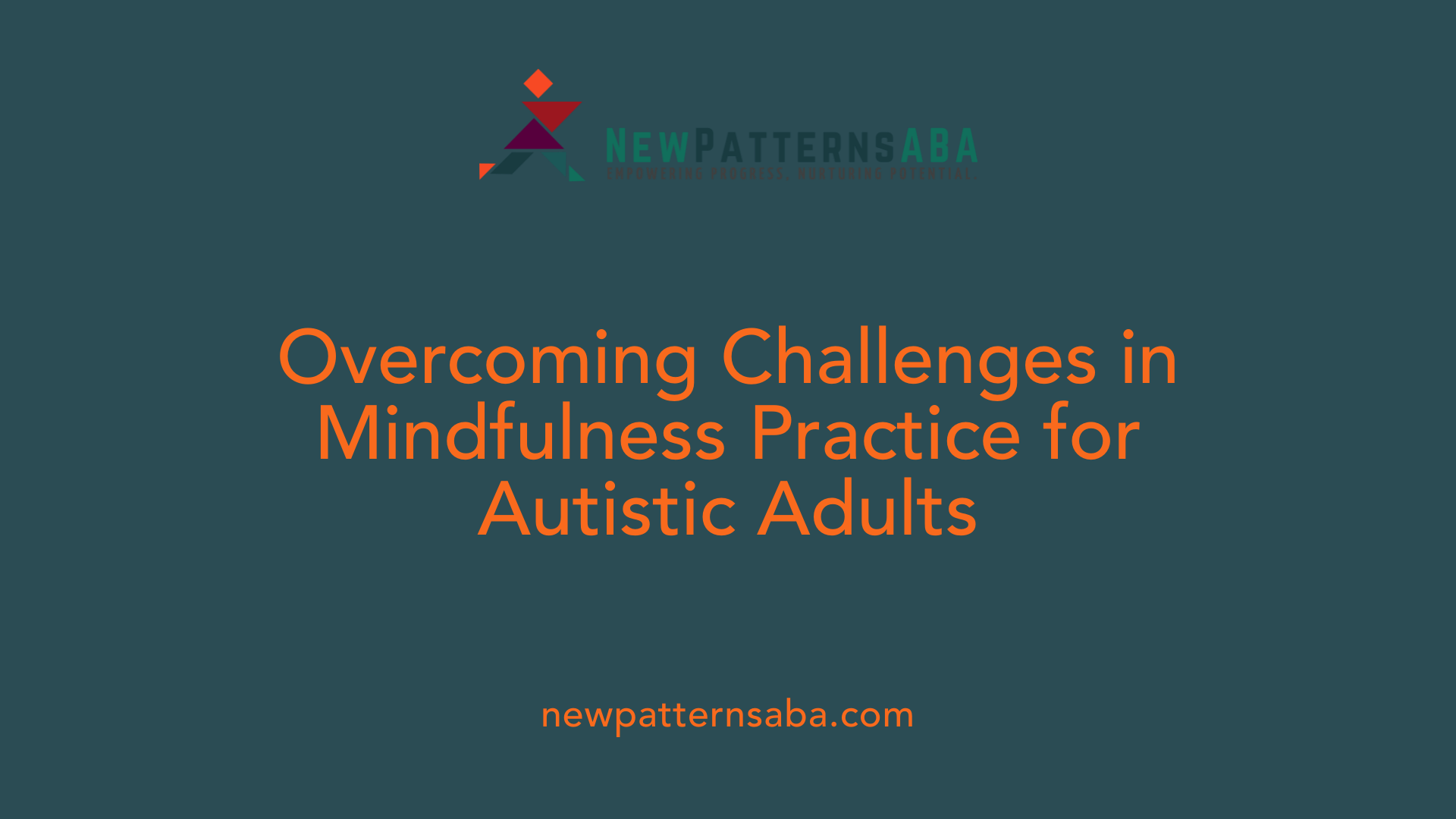
What challenges are faced when practicing mindfulness with autistic adults?
Practicing mindfulness can present unique challenges for autistic adults, often rooted in sensory sensitivities, the abstract nature of mindfulness concepts, the importance of routines, and tendencies towards self-judgment.
Sensory sensitivities are common and can make traditional mindfulness environments overwhelming. Bright lights, loud noises, or textures that are too stimulating may hinder engagement. To address this, practices often need modifications, such as incorporating tactile grounding, weighted items, or movement-based activities that align better with sensory preferences.
Abstract concepts like non-judgment or present-moment awareness can be difficult to grasp. Explaining these ideas with concrete examples, clear instructions, and visual supports can enhance understanding and comfort.
Maintaining consistent routines is essential to embed mindfulness into daily life. Variability or unpredictability can lead to frustration or avoidance. Developing structured practices at the same time daily, linked with existing routines, can encourage habituation.
Self-judgment or frustration with oneself when difficulties arise might discourage ongoing practice. Cultivating self-compassion and normalizing challenges helps maintain motivation and resilience.
How can these challenges be effectively addressed?
Adapting mindfulness practices to suit individual needs is crucial. For sensory sensitivities, incorporating activities like tactile stimulation, guided visualization with visual aids, or movement-based techniques can make practices more accessible.
Offering concrete instructions and breaking down abstract ideas into manageable steps helps clarify intentions behind mindfulness, making it easier to practice.
Establishing structured routines and pairing mindfulness sessions with familiar daily activities support consistency and habituation.
Promoting a non-judgmental, compassionate attitude towards oneself fosters perseverance and reduces anxiety around practice.
Practical approaches include:
| Technique | Description | Purpose |
|---|---|---|
| Tactile grounding | Using textured objects or touch to anchor attention during practice | Overcome sensory overload |
| Guided visualizations | Visual aids or imagined scenarios to support focus | Clarify abstract concepts |
| Mindful movement or stimming | Incorporating gentle movement or repetitive behaviors during mindfulness sessions | Match sensory preferences; improve engagement |
| Routine pairing | Combining mindfulness exercises with existing daily activities like brushing teeth or commuting | Enhance consistency and habituation |
| Self-compassion exercises | Practicing kindness towards oneself for difficulties encountered during practice | Reduce self-judgment and frustration |
By customizing practices to match sensory profiles and cognitive styles, and by fostering empathy toward oneself, autistic adults can better integrate mindfulness into their routines. While challenges are inevitable, strategic adaptations and ongoing self-support can promote meaningful benefits, including better emotional regulation and reduced stress.
Resources and Strategies for Educational Implementation
Implementing mindfulness within autism-focused educational settings can significantly support students’ emotional, behavioral, and cognitive development. Several resources and strategies have been developed to facilitate effective integration.
Resources available include specialized training programs designed for educators, caregivers, and staff. These programs aim to deepen understanding of autism-specific needs and teach practical mindfulness techniques tailored for autistic individuals. Visual supports and sensory tools are also vital, offering multisensory cues and calming aids that help students engage with mindfulness activities comfortably.
Curriculum guides provide structured frameworks to incorporate mindfulness practices systematically. They often include step-by-step activities such as guided relaxation exercises, mindful walking, sensory breaks, affirmations, and body scans, which can be embedded into daily routines. Online support groups, like the UC Davis MIND Institute’s Get Mindful program, connect educators and caregivers to share experiences, resources, and encouragement.
Strategies for successful implementation center on creating supportive, low-stress environments that promote focus and calmness. Tailoring practices to meet individual sensory and cognitive needs is critical, which may involve adjusting durations, complexity, or sensory engagement levels of activities.
Activities such as guided visualization, sensory-based mindfulness (using tactile grounding or temperature awareness), and mindful movement are especially suited for autistic learners. These activities assist in sensory regulation and emotional management.
Modeling mindfulness behaviors by teachers and staff, along with encouraging parental involvement, amplifies the positive effects. When adults demonstrate and practice mindfulness openly, children are more likely to adopt these strategies and develop resilience.
Regular assessment and ongoing adaptation of strategies ensure they remain responsive to each student’s progress and changing needs. Evidence supports that consistent use of tailored mindfulness activities can reduce behavioral challenges, improve emotional regulation, and enhance social skills for students with autism.
Incorporating mindfulness into education isn’t a one-time effort but a continuous process that benefits from collaboration, flexibility, and patience. Supporting educators and caregivers with these resources and strategies creates a more inclusive, mindful learning environment that fosters well-being for autistic children and the adults supporting them.
Conclusion: The Future of Mindfulness in Autism Education
What is the conclusion on integrating mindfulness into autism learning?
The current body of research suggests that incorporating mindfulness techniques into the education and support of autistic individuals offers promising benefits. Studies have shown improvements in emotional regulation, social skills, and reductions in stress and anxiety. These positive outcomes highlight the potential value of mindfulness-based interventions (MBIs) in helping individuals with autism manage sensory overload and emotional difficulties.
However, despite encouraging findings, the evidence remains moderate in quality. Limitations such as small sample sizes, reliance on self-report measures, and lack of blinding in many studies indicate that further rigorous research is needed. Establishing standardized protocols and understanding the long-term impacts of mindfulness practices on autistic populations are essential next steps.
Personalized approaches are vital, given the diversity within the autism spectrum. Tailoring mindfulness activities to suit individual sensory preferences, cognitive styles, and routines can maximize effectiveness. For example, incorporating structured routines, sensory engagement, and movement-based techniques can make mindfulness practices more accessible and meaningful.
Integration into existing support systems such as schools, therapy programs, and community resources is critical. This requires ongoing training for practitioners, the development of appropriate resources, and active engagement with families and communities. Doing so can foster sustainable implementation, ensuring that mindfulness practices are consistently accessible to those who benefit most.
As research advances, the emphasis on customizing interventions and embedding them into daily life will likely grow. This approach not only enhances individual outcomes but also helps build resilience and emotional well-being over time.
In summary, while the future of mindfulness in autism education looks promising, a collective effort involving research, personalization, and systemic integration is essential. Continued exploration and refinement will ensure that these practices become a mainstream, effective tool to support the diverse needs of autistic individuals and their caregivers.
Fostering Growth and Well-Being Through Mindfulness Integration
As mindfulness continues to evolve as a supportive tool in autism education, its personalized, adaptable, and evidence-based practices hold the potential to significantly improve emotional health, social competence, and overall quality of life for autistic individuals. Continued research, innovative strategies, and dedicated resources are essential to fully realize its benefits and embed mindfulness as a core component of autism support frameworks.
References
- Mindfulness-Based Interventions for People with Autism ...
- Mindfulness Practices for Autistic Adults
- Mindfulness-Based Interventions for People with Autism ...
- The effectiveness of mindfulness-based interventions for ...
- Daily mindfulness practice reduces anxiety for autistic adults
- Mindfulness-based stress reduction for autistic adults
- 8 Simple + Accessible Mindfulness Activities for Autism
- Mindfulness group now enrolling parents of children with ...
- Mindfulness-Based Interventions for People with Autism ...






